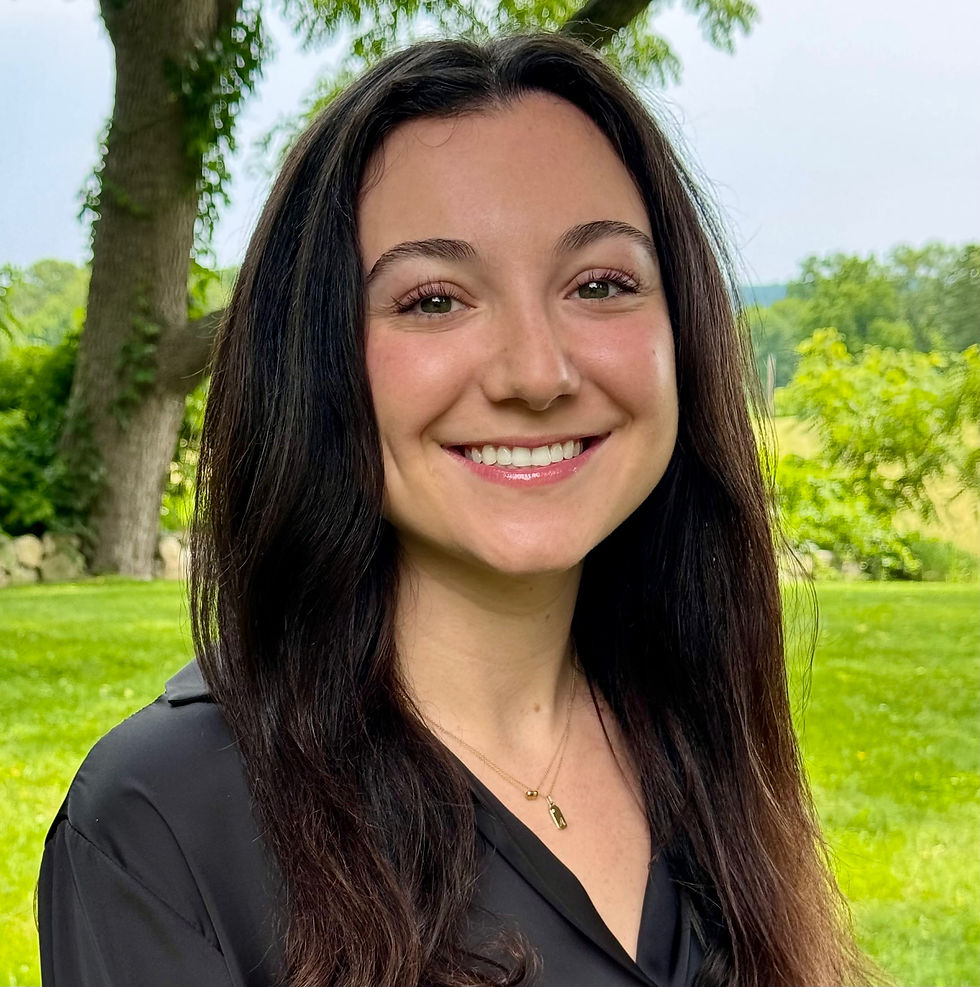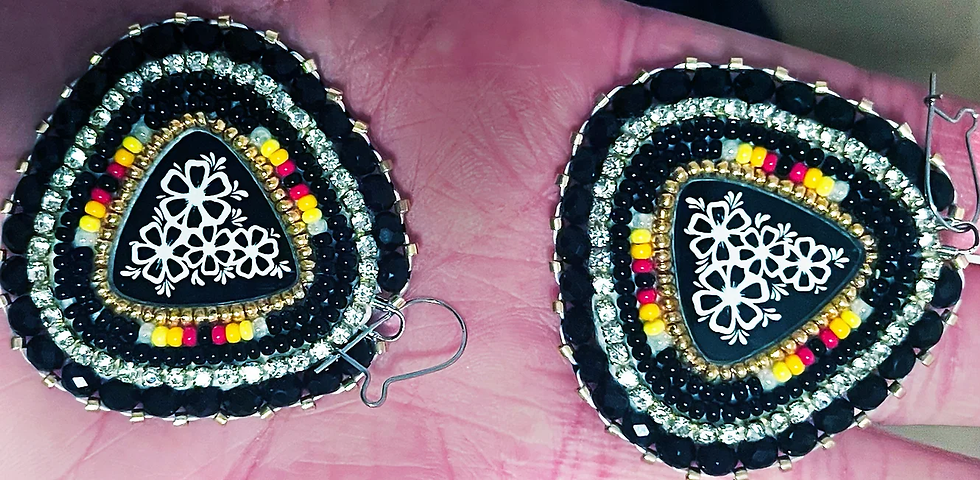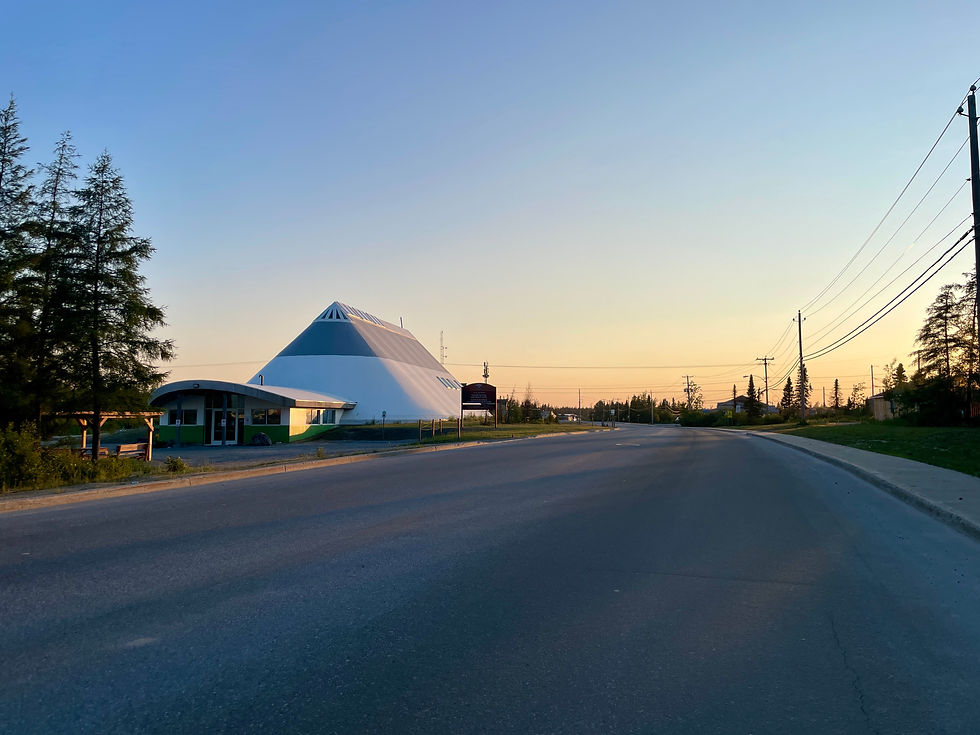Lessons from the North: Friendship, Culture, and Medicine
- Alyse Diamond

- Feb 26
- 6 min read
Updated: Feb 26

When partnering with Indigenous communities in healthcare, meaningful engagement begins with understanding the social, cultural, and historical factors. Through my own work, both on-site and remotely, I’ve seen how offering clinical support goes hand in hand with learning from local healthcare teams and community members.
Early exposure to healthcare in underserved communities, combined with strong mentorship, play a critical role in shaping future physicians and healthcare leaders. In this post, Alyse Diamond, a future medical student currently on a gap year, shares her experience living and working in Kuujjuaraapik / Whapmagoostui for six weeks. At Minnie’s Hope Social Pediatric Centre, she participated in community programs and gained a firsthand insight into social factors impacting health. More importantly, she formed meaningful connections with those around her—reminding us that true partnership isn’t just about providing services, but about valuing the relationships, traditions, and lived experiences that shape a community.
Her reflections reinforce what I’ve seen firsthand: we need more future clinicians who not only bring medical expertise but also a willingness to listen, learn, and bridge gaps between communities and healthcare systems.
I’ll let Alyse take it from here.
From Boston to the North

My name is Alyse Diamond, and I’m from outside of Boston, Massachusetts. I graduated from Tulane University last May and will begin medical school in the U.S. this August. My journey toward medicine began in my youth, largely inspired by my cousin, Dr. Johanne Morel. As a dedicated and compassionate paediatrician, she has been serving Northern Quebec’s Cree and Inuit communities for over 30 years.
I was fortunate to accompany her to Kuujjuaq and Kangirsuk in August 2018, an experience that deepened my interest in the North and made me eager to return. In January 2024, Dr. Morel introduced me to Dr. Michelle Kwok as we prepared to travel up North together. Unexpectedly, we learned that we would be traveling alone together to Kuujjuaq and Kangirsuk. Fortunately, we quickly connected—not only as colleagues but also as friends.
Over shared spaghetti-based dinners, we reflected on the adventures, challenges, and lessons of each day. As a senior in college at the time, this trip was truly pivotal for me. Dr. Kwok’s ability to form genuine connections—whether with strangers in the Kuujjuaq airport or in the clinical setting—left a lasting impression. She welcomed my help with the Connexion Nordique project, which confirmed my interest in population health and quality improvement.
My First Journey to Kuujjuaraapik (Great Whale)



In November 2024, I embarked on my first six-week visit to work at Minnie’s Hope Social Pediatric Centre, which serves the children of Kuujjuaraapik and Whapmagoostui. I was incredibly grateful to become part of such a kindhearted community and to continue learning from the Cree and Inuit people of Great Whale.
As I prepared for my time in a village I had never visited, there was a lot I didn’t know, and I wasn’t sure what to expect. Having grown up in a densely populated area, I inherently felt out of my comfort zone upon arriving in this remote Canadian community of about 1,000 Cree and 800 Inuit. At the same time, I was eager to experience the culture, traditions, and daily life of the people around me.
One of the most meaningful yet unanticipated aspects of my time in Great Whale was the friendships I was able to make. These connections weren’t instant—they took time to grow. I often think about how, had I only stayed for a couple of weeks, I might not have walked away with the cherished relationships that will continue even when I return to the U.S.
Connecting with the Community

On my first night, I attended the Cree Women’s Association Halloween Party, an event open to everyone, including Inuit and non-Indigenous community members. Within the first half hour, I was overwhelmed by a sense of warmth and belonging.
Held at Kattitavik Hall, a multifunctional community center, the gathering radiated a feeling of togetherness that was both palpable and contagious. The strong sense of community and connection was unlike anything I had ever experienced. As I sat down at a table and introduced myself, I initially felt a little shy, but the genuine welcome from those around me put me at ease almost instantly.
The evening was filled with laughter, a Halloween costume contest, group activities, karaoke, and a shared charcuterie meal. The energy in the room was infectious. That night, as I walked back to my transit housing, my cheeks ached from smiling and laughing so much—a simple yet unforgettable memory.
From that first night at the Halloween party through my six weeks in Great Whale, I had the opportunity to connect with people my age from Kuujjuaraapik and Whapmagoostui. As we got to know each other, I realized that despite our vastly different backgrounds, we shared more in common than I had expected.
One conversation that stood out to me happened during my last week. My closest friend in the community casually admitted: “I only started talking to you at first because I was bored, but then we ended up becoming friends.” Her unapologetic honesty made me laugh, but I was genuinely touched.
Reflecting on this moment, I began to appreciate the beauty of unexpected friendships. One thing that struck me during my time up North was the strength and depth of human connection within the community. It was evident that people truly value, support, and care for one another in a way that felt unique and deeply rooted. I felt incredibly grateful to have experienced even a small fraction of that warmth through the genuine friendships I formed over just six weeks.
It was also fascinating to see how younger generations balance their connection to the wider world—through platforms like TikTok—while remaining deeply committed to preserving their Indigenous culture, language, and traditions.
I also deeply enjoyed my conversations with community elders, like a particularly heartwarming chat I had with a Cree woman in the airport about the importance of family. Moments like these left a lasting impression, reminding me of the richness of intergenerational knowledge and storytelling within the community.
The Little Moments That Mattered

At the same time, there was something almost inexplicably special about connecting with individuals my age and bonding over shared generational experiences that transcended geography, language, and culture. Through natural, informal conversations, I gained a unique glimpse into daily life in the North and what growing up there is like.
One evening, over a dinner of caribou stew and bannock, we jumped between pop culture references, stories about country food, and debates over whose grandma makes the best bannock. Another day, my friend and I sang Adele’s “Rolling in the Deep” at the top of our lungs in the car, and later, during downtime while running errands, she taught me words and phrases in Cree. These moments—simple yet profound—made my experience all the more meaningful.

My friend also took me to some of her favourite places around the community. Every evening, I would audibly gasp at the breathtaking sunset outside the window. One time, we went to the Inukshuk, an Inuit landmark and symbol of guidance in the Arctic, to watch the sun dip below the horizon. There, we ran along the beach with childlike joy, drawing in the sand with our fingers and admiring the striking colours in the sky. Another evening, she brought me to a secluded spot where we could watch the seals, followed by a walk through the village to admire homes decorated with Christmas lights.
Exploring the community with my friend meant we constantly ran into people she knew, giving me the chance to chat with individuals I might not have met otherwise. One thing I miss about college is the familiarity of bumping into friends on campus—seeing that same tight-knit dynamic in Great Whale felt both nostalgic and heartwarming.

One of my favourite experiences was visiting the bazaar, a community event where women set up tables showcasing intricate handmade beadwork, sealskin jewelry, moccasins, paaluks (mittens), and homemade food. I loved socializing, learning about the craftsmanship, and admiring the beautifully detailed pieces on display. I left with a pair of beaded earrings and a dessert plate to share—my phone clearly did not eat first!
Reflections on an Unforgettable Experience

My first experience living and working in Kuujjuaraapik/Whapmagoostui was deeply impactful—both personally and as an aspiring physician. As I boarded my flight back to Montreal, I could feel how each small moment—no matter how seemingly insignificant—had come together like pieces of a puzzle, revealing larger lessons in culture, humility, and friendship.
I developed a profound appreciation for the power of human connection and the importance of listening thoughtfully to others' stories. In many ways, my time in Great Whale reminded me that forming authentic relationships is not just meaningful but fundamental to understanding and engaging with the world around us.
This incredible experience was shaped by the individuals and community who welcomed me, and for that, I continue to reflect with deep gratitude—all while looking forward to returning for seven more weeks in March!
Concluding thoughts
Alyse’s reflections highlight something I’ve come to appreciate: that partnering with Indigenous communities is ultimately about respect, relationships, and lived experiences. Meaningful progress happens when we approach this work with humility, ensuring that care is guided by the needs of those it serves. Alyse’s journey is a reminder that we all have something to learn—and that true leadership begins with listening.
All photos taken by Alyse Diamond. Map edited from Google Maps.





Comments